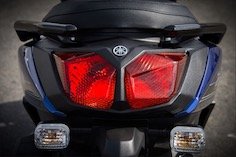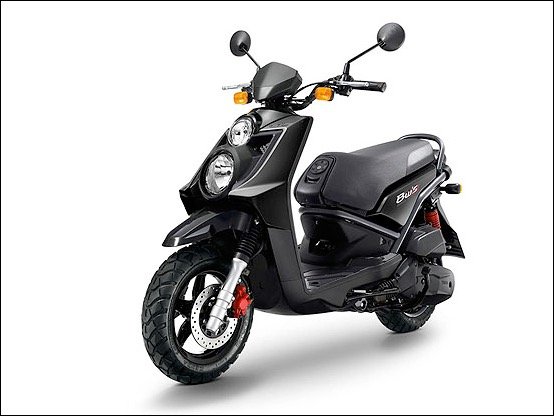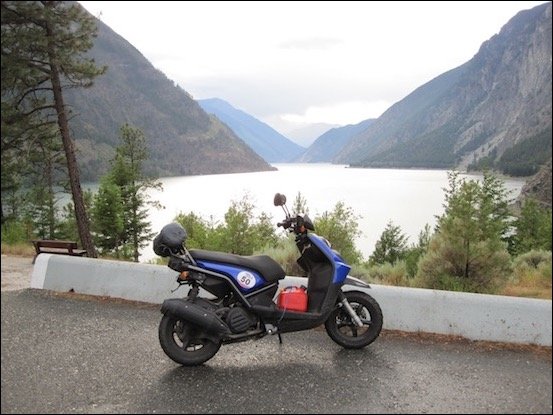YAMAHA ZUMA 125 / BWS 125 (YW125)
For 2009 Yamaha USA introduced the Zuma 125 as a faster version of their popular Zuma scooter. Since then the Zuma 125 has proven popular with Zuma fans, new scooter buyers and even the Honda Ruckus crowd who have been clamoring for a bigger version of that scooter for years.
The Zuma 125 is badged in Canada and overseas as the BWs 125, internally to Yamaha as the YW125 and casually to enthusiasts as the Z125. The Zuma 125 has been a solid seller every year thanks to its quality, fair price and unique style. Yamaha introduced a heavily updated version of the Zuma 125 for 2016, which remains on sale as of 2020.
Models
The Zuma 125 has been offered in two versions (’09 – ’15 and ’16 – present). The first version (below right) was introduced with bug eye headlights and styling similar to it’s smaller Zuma 50 sibling. This scooter was actually Yamaha’s BWs 125 scooter from the Asian market which they designed new headlights for and introduced in the USA as the Zuma 125 and in Canada still using the BWs 125 name. This first Zuma 125 model went on sale for 2009 and was sold continuously through 2015 except in Canada where from Yamaha skipped the 2012 model year to clear out inventory.
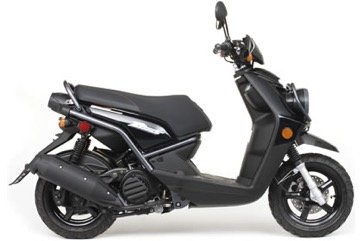
After 7 years, Yamaha revamped the Zuma 125 for 2016 (top and left) with major updates to the style and brakes. This revised version is the BWs R125 scooter Yamaha sells overseas after launching it last summer. The most notable changes came to the front end, with Yamaha moving away from the bug eye headlights. Yamaha started offering their smaller Zuma 50 in a non-bug eye version for 2014 (the Zuma X), so it’s no surprise the big Zuma moved on as well.
This second version uses the same frame and motor, but otherwise is mostly a different machine. Yamaha re-worked nearly all the body panels, added knee room, revamped the suspension, added new digital gauges, a cupholder and a larger fuel tank, all while shaving 6 lbs off the scooter (now 262 lbs).
Other noteworthy changes include moving the fuel tank down into the floor, which frees up more underseat storage (7.7 gallon vs 6.5) and moves the fill location to the left side of the legsheild. Yamaha also upped the front disc brake to a new wavy 245mm rotor (from 220mm) and switched the rear brake from a weak 150mm drum to a proper 200mm disc.
Engine
What’s interesting about the Zuma 125 engine is that it’s an unusual blend of new and old tech. The fuel injection and 4-valves are downright cutting edge (in engines this small), but strangely Yamaha opted to skip the liquid cooling and instead keep the temperatures under control with a fan. This is a curious decision because Yamaha has recently added liquid cooling to their two 4-stroke 50cc models. There must be some merit it to the idea though, as Honda has also gone this route with their second generation Metropolitan. There are some advantages to air cooling (simplicity, light weight) but the steady temperatures, close engine tolerances and higher compression ratios that liquid cooling enables are still optimal.
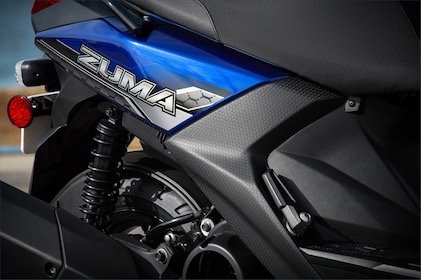
Top speed of this scooter is 95km/hr (57-58mph) which is enough for most roads but not really highway material. The YW125 accelerates well to 80km/hr (50mph) and then it wanders higher from there. 55mph is easily achievable in normal conditions, which is noticeable faster than the older 125cc engine Yamaha was using in their Vino 125. For owners who want more speed, lots of performance parts are already available including substantial big bore kits (see links section).
Environmentally, this scooter deserves full marks because it has a catalytic converter to reduce emissions in addition to its fuel sipping engine. Yamaha reports that this scooter gets 38km/l (89mpg) but that’s heavily on the optimistic side because Yamaha assumes you’re holding a steady 25mph (40km/hr). Realistic fuel economy is in the 70-75 mpg range. The YW125 does have a relatively small fuel tank of just 6 litres (1.6 gal) which means even if you can attain the listed 89mpg, you’re still going to be out of gas after 142 miles (230 kms). A tiny gas tank can make going to the gas station a low cost experience, but a larger range would still be nice. Something 50% bigger is closer to the norm for this class. My personal experience with the YW125 is that you can get about 100 miles per tank under normal driving, as little as 70 miles if you do the full tank at full throttle on the highway.
Storage & Convenience
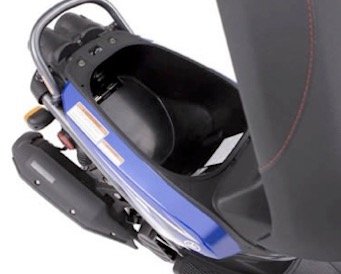
How about the rest of this scooter? There are a few main qualities to look for a scooter (besides the engine) which are storage, comfort, quality and style. Being a Yamaha, you know the quality is good. Comfort of this scooter is mixed. The seat has enough room to accommodate larger riders, but short legged riders will find it kinda high and the cushioning is stiff for longer trips. During my 10,000 km (6000 miles) cross Canada road trip on a Zuma 125, the seat comfort was tolerable, but not great.
 Gripes
Gripes
One small gripe with the first version is that Yamaha passed up an easy opportunity to include a glove box. Perhaps it would have interfered with knee room a bit, but it looks like it could have been done. Having both a glove box and underseat storage is great so you have place for your small stuff (ownership, insurance, spare gloves etc) and then a larger compartment for….well, larger stuff. Yamaha does sell a ‘front basket’ (below) for the left side of the inner legshield, but this ‘basket’ is really a plastic cupholder and less usable than a lockable cubby hole would be. Yamaha priced this accessory at a surprising $40 in the USA ($47 in Canada). Yamaha’s other accessories including a windscreen ($130) and rear rack ($110). The hook shown in this photo is not included with North American Zuma 125’s, but if you get resourceful you can source one overseas.
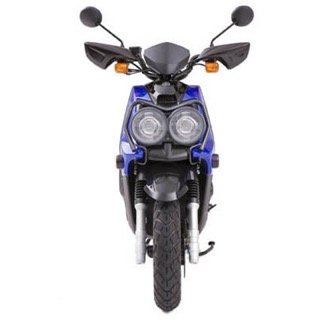
Styling
With the first generation Zuma 125, Yamaha did quite a nice job with the styling. The only arguably poor areas were the headlights and the mirrors, both of which are easily changed. The ‘bug eye’ headlights and mirrors both look out of place because they are overly cheeky compared to the rest of the aggressive scooter. Understandably Yamaha had their hands tied with the headlights because these were one of the main design elements of the smaller BWs/Zuma. Yamaha did a nice job of updating the smaller Zuma style without losing the essence. If you wish, you can replace the cute round mirrors with aftermarket ones and replace the headlights with Asian spec ones. Overseas, this scooter is sold with a different single headlight array (see bottom of page) that is unique and nice. You can convert your BWS/Zuma 125 to this setup for about $200.
The second generation style is more of a mixed bag. The move away from the bug eye lights was the right call, but Yamaha also opted to cover up the rear tube frame that was mostly exposed in the first Zuma 125 and was one of the most unique parts about the scooter. This new cladding causes the big Zuma to look less distinct and more like the sea of plastic clad scooters out there. The new taillight is nice, but the rest of the rear end was better in the first generation. Overall the second generation style takes 2 steps forward but 3 back.
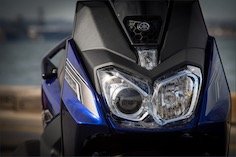
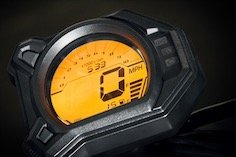
Comparison
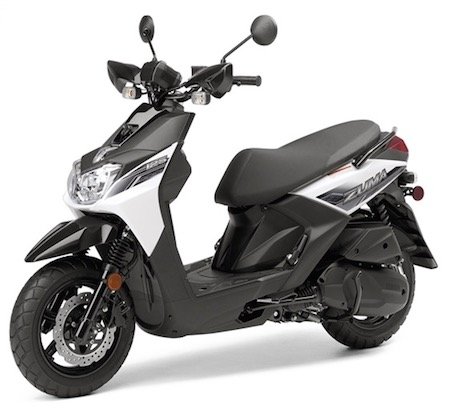
Overall Yamaha has a winner on their hands – if nothing else because they’ve managed to keep this a physically small and fun scooter. The Z125 feels like a powerful small scooter, rather than an underpowered maxi-scooter which some physically large mid-sized scooters feel like. All the key dimensions of the YW125 are within an inch or two of its 50cc sibling, helping this scooter retain sporty handling. This scooter really is the same Zuma of old but with twice the motor and improved new styling. If you can swing the extra grand, the 125cc version of the Zuma is the way to go.
Pros:
- Fuel injected, 4-valve, 4-stroke engine
- Rugged looks
- Catalytic converter
- Kickstand and centerstand
- Ceramic cylinder coating
- Nice looking rims
- Price
Cons:
- Air cooled
- No kickstarter
- Firm seat
- Oversized muffler
Links:
Zuma / BWs 125 Service Manual – Very helpful for anyone who works on their own scooter.
MotorscooterGuide Forums – Visit the forum on this site to chat about this scoot
BWS R125 Launch Video – Check out the Japanese language press release of the BWs R125
Moto123 BWS125 Review – Nice writeup
ZumaForums – Lots of great Zuma 125 talk here
ScooterSwapShop – Style and performance parts for the Zuma 125
Key Specs:
- MSRP: $2999 (USA 2009) to $3399 (USA 2017), $4199 (Canada 2009), $3699 (Canada 2017).
- Engine: 4-stroke, air-cooled (fan assist), SOHC, 4-valve, single
- Displacement: 125 cc
- Bore and Stroke: 52.4 x 57.9mm
- Compression Ratio: 10:1
- Maximum Torque: 7 lbs-ft @ 6,000 rpm
- Fuel Delivery: 24mm throttle body fuel injection
- Estimated Fuel Consumption: 38kpl / 89mpg (This is assuming you travel at a steady 25mph).
- Lubrication: Wet Sump
- Ignition: TCI / Electric Start
- Transmission: Fully Automatic
- Final Drive: V-belt / Spur gear
- Suspension: (Front/Rear): 27mm fork with 78mm travel / dual shock 80mm travel
- ’09 – ’15 Brakes (Front/Rear): 220mm Disc / 150mm Drum
- ’16 – Present Brakes (Front/Rear): 245mm Disc / 200 mm Disc
- Tires (Front/Rear): 120/70-12 / 130/70-12
- Length: 1,910mm (75.2”)
- Width: 765mm (30.1”)
- Height: 1,110mm (43.7”)
- Wheelbase: 50.8” (’09-’15), 51.4” (’16 – present)
- Ground Clearance: 125mm (4.9″)
- Seat Height: 780mm (30.7”)
- Fuel Capacity: 6 litres/1.5 gal (’09-’15) or 6.5 liters/1.7 gal (’16-)
- Wet Weight: 268 lbs (’09 – ’15), 262 lbs (’16 – present)
Colors:
- 2009: Yamaha Blue, Metallic Black, Calm Yellow
- 2010: Team Yamaha Blue, Alpine White
- 2011: Raven aka Metallic Black
- 2012: Raven aka Metallic Black, Alpine White (no Canadian model in 2012).
- 2013: Matte Black (aka Metallic Black in Canada), Dynamic Blue (USA Only), Vivid Metallic Red (Canada Only)
- 2014: Matte Titan, Burnt Orange Metallic
- 2015: Stardust Silver, Competition Silver & Heat Red
- 2016: Radical White, Ultramarine blue aka Dark Purplish Metallic Blue
- 2017: Heat Red, Liquid Silver (aka Silver 3 in Canada)
- 2018: Heat Red, Liquid Silver
- 2019 – 2020: Matte Black, Ultramarine Blue
Overseas the YW125 gets a different headlight setup:

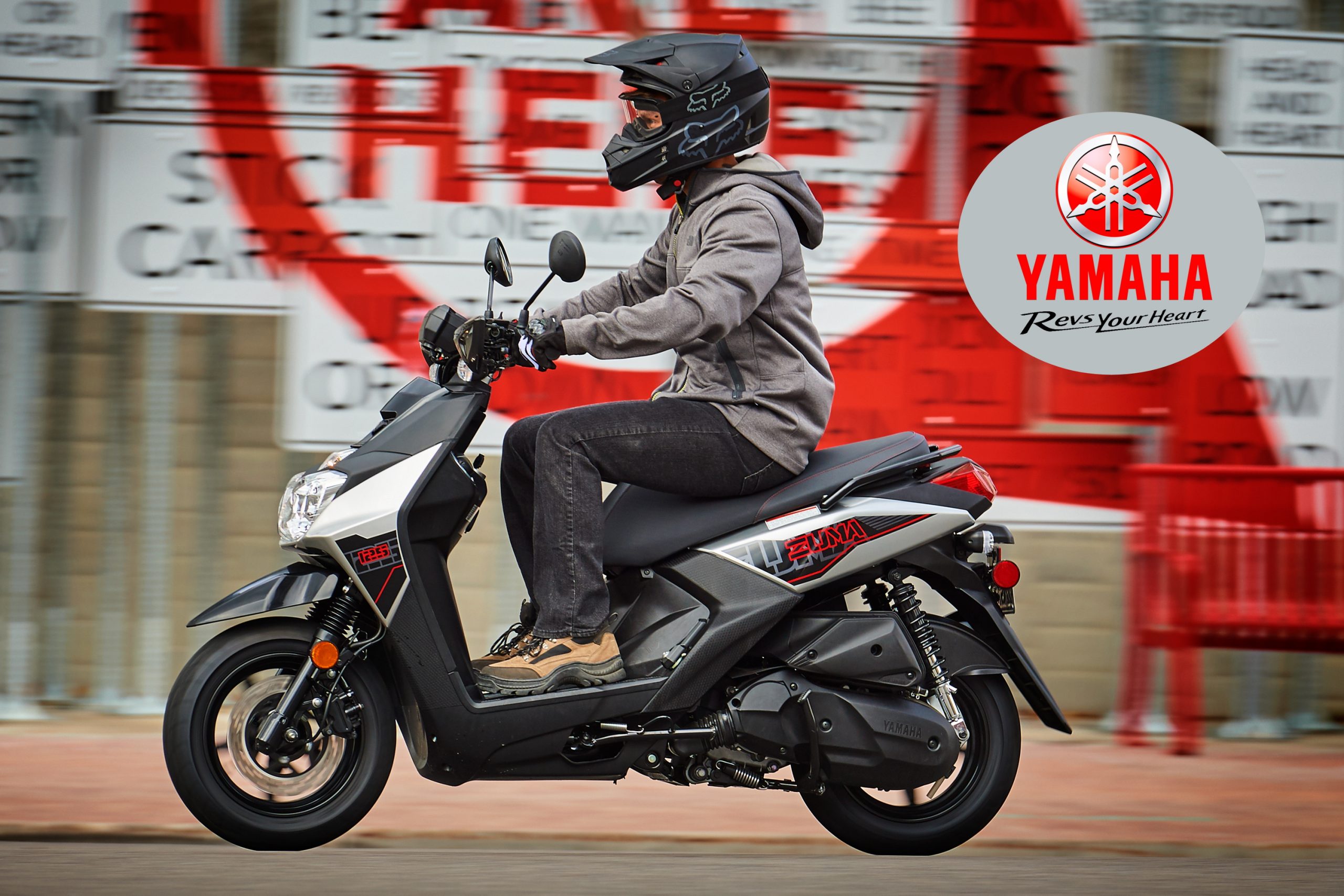
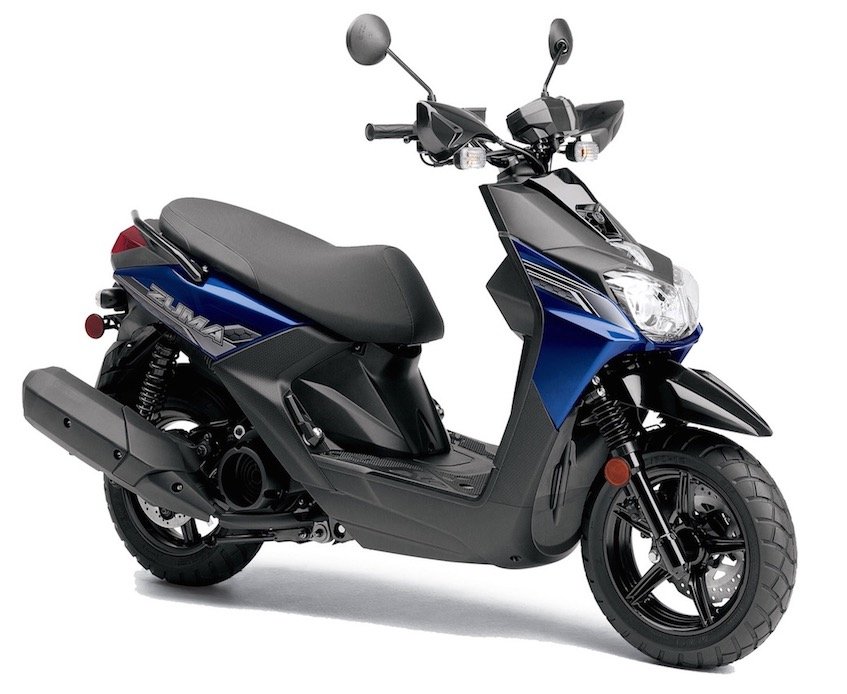
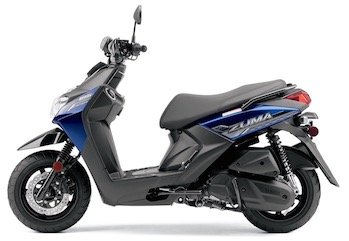
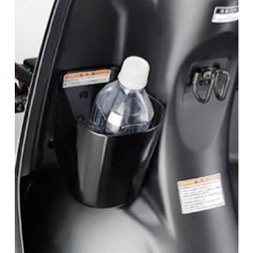 Gripes
Gripes